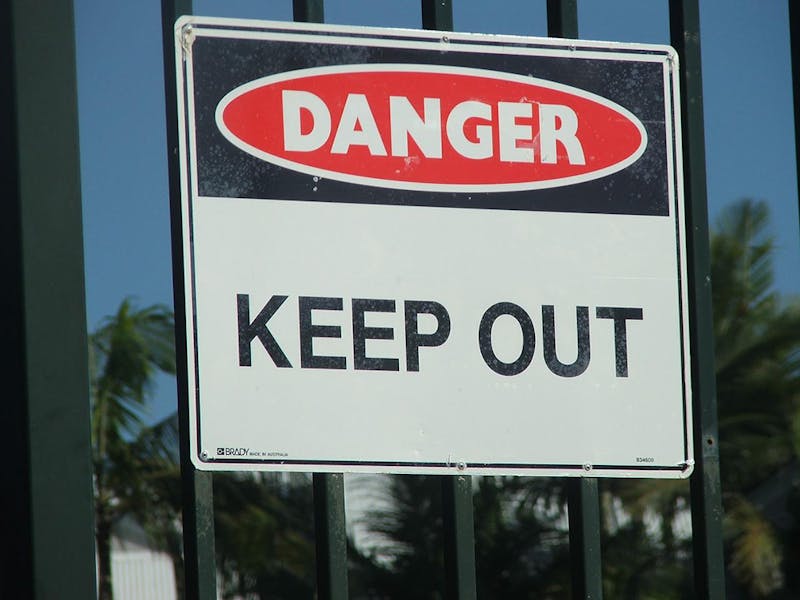
Whether someone’s talking about a shut-down factory, a swimming pool, a condemned house, a rugged trail at a nature preserve, or ramps at a skate park, each of these places may pose injury dangers to those who visit them. Most property owners have a duty of care to keep their premises reasonably safe to minimize the chances of someone getting hurt. However, their responsibility to do so generally varies, depending on why the injured individual was present on the property.
When you’ve suffered injuries while visiting someone else’s property, you may be hopeful that you can recover your medical costs and other incident-related losses from its owner. However, you’ll need to have a firm understanding of what is an adequate warning from a property owner and its impact before determining whether recovery of compensation is possible.
What Is Premises Liability?
This legal concept refers to the idea that an Arkansas property owner is generally responsible for ensuring that their premises are maintained in a reasonably safe condition, regardless of whether it is public or private. Consequently, anyone who visited those premises and suffered injuries would generally be able to hold the property owner liable for exposing them to any hazards to their health.
Many individuals question whether a property owner’s posting of signage notifying of potential dangers serves as an adequate warning from a property owner of hazards visitors face.
What Constitutes an Adequate Warning?
When plaintiffs get injured, they often cite a property owner’s “inadequate warnings” or “failure to warn” in their lawsuits demanding damages. What is a business owner’s duty to warn?
Posting a sign warning of potential hazards, like high voltage lines in the area, may not constitute enough of an adequate warning of dangers visitors face. Instead, that sign may also need to spell out steps visitors must take to avoid getting hurt.
There’s one exception to this rule, which is when an invitee is already aware of a potentially dangerous condition or its presence is obvious to them.
Do Warning Signs Limit Property Owner Liability?
Attorneys who handle premises liability matters, we often see prospective clients who come to us after suffering traumatic brain damage, broken bones, or other catastrophic injuries. Those individuals frequently reference having seen a danger sign on the premises where they got hurt. These prospective clients will inquire if a warning from a property owner means that they don’t have the right to hold anyone liable for their injuries.
Property owners should post “Do Not Enter” or “No Trespassing” signs if they’d like others to stay off their grounds. Therefore, you may be eligible to sue a property owner who didn’t take measures to deter you from visiting their premises.
The reason we use the word “may” as opposed to being more definitive in our response is that your ability to take legal action is contingent, in part, upon the reason you were present on someone else’s premises when you got hurt. There are three different categories into which you may fall.
What Are the Three Categories of Visitors to a Property?
Your ability to pursue legal action following an injury on another person’s premises can depend on why you were present there. The three classifications include:
- Licensee: A welcome visitor or someone who visits a property with the knowledge and approval of the property owner.
- Invitee: Someone the property owner or their authorized representative has invited to the premises.
- Trespasser: An individual who visits someone else’s property without first receiving their consent to do so.
In the case of the invitee and licensee categories, the law assumes that property owners have taken time to ensure the reasonable safety of their premises before inviting or otherwise consenting to these individuals’ visits. That same assumption does not exist for trespassers since they aren’t invited.
How An Individual’s Presence Impacts Their Right to Pursue an Injury Claim
While property owners may have a duty to take measures to keep invitees or social guests to their property safe, they don’t necessarily have the same obligations when it comes to trespassers.
While property owners can’t proactively do anything that could potentially harm trespassers to their property, their duty of care to these uninvited guests is minimal. Perhaps one of the only instances in which a property owner has a duty of care to trespassers is if they’re well-aware that they regularly frequent their property. In that case, property owners would have some obligation to warn potential trespassers of hazards they may encounter on their premises and highlight how they might lead to injuries or deaths.
There is one potential exception to this rule, which is if the trespassers are children. The attractive nuisance doctrine may apply in trespassing situations involving kids.
What Is the Attractive Nuisance Doctrine?
Attractive nuisances are potentially hazardous property situations that grab someone’s attention. Backyard trampolines or swimming pools may fit this bill. Property owners can reasonably expect adults to understand the concept of not venturing into someone else’s yard because property lines exist. The attractive nuisance doctrine assumes that kids may not have that same understanding of boundaries.
Property owners may install signs warning of a potentially aggressive dog or that they don’t want anyone trespassing past their gate into their swimming pool. However, there’s no reasonable expectation that a child will be able to see and comprehend what the sign says. Homeowners or other Little Rock property owners could be held liable in such cases, despite having installed signs warning of potential dangers others faced.
Help in Proving Liability in Your Premises Liability Case
There are certain elements that plaintiffs must establish in order to move forward in pursuing a premises liability claim.
The presence of some evidence, such as a sign placed on a fence warning of potential dangers a dog in a homeowner’s backyard posed, may initially seem to give them an upper edge because it appears that adequate warning from a property owner was made. However, an attorney may argue that such a warning sends a different message that the homeowner knew their dog was dangerous. Finer details like this may make it even easier for you and your lawyers to convince a judge or jury that a homeowner is liable for your injuries.
Our attorneys at McMath Woods P.A. know premises liability laws. Let us review the details surrounding what happened to you to determine if you have a valid claim to pursue in Arkansas.

